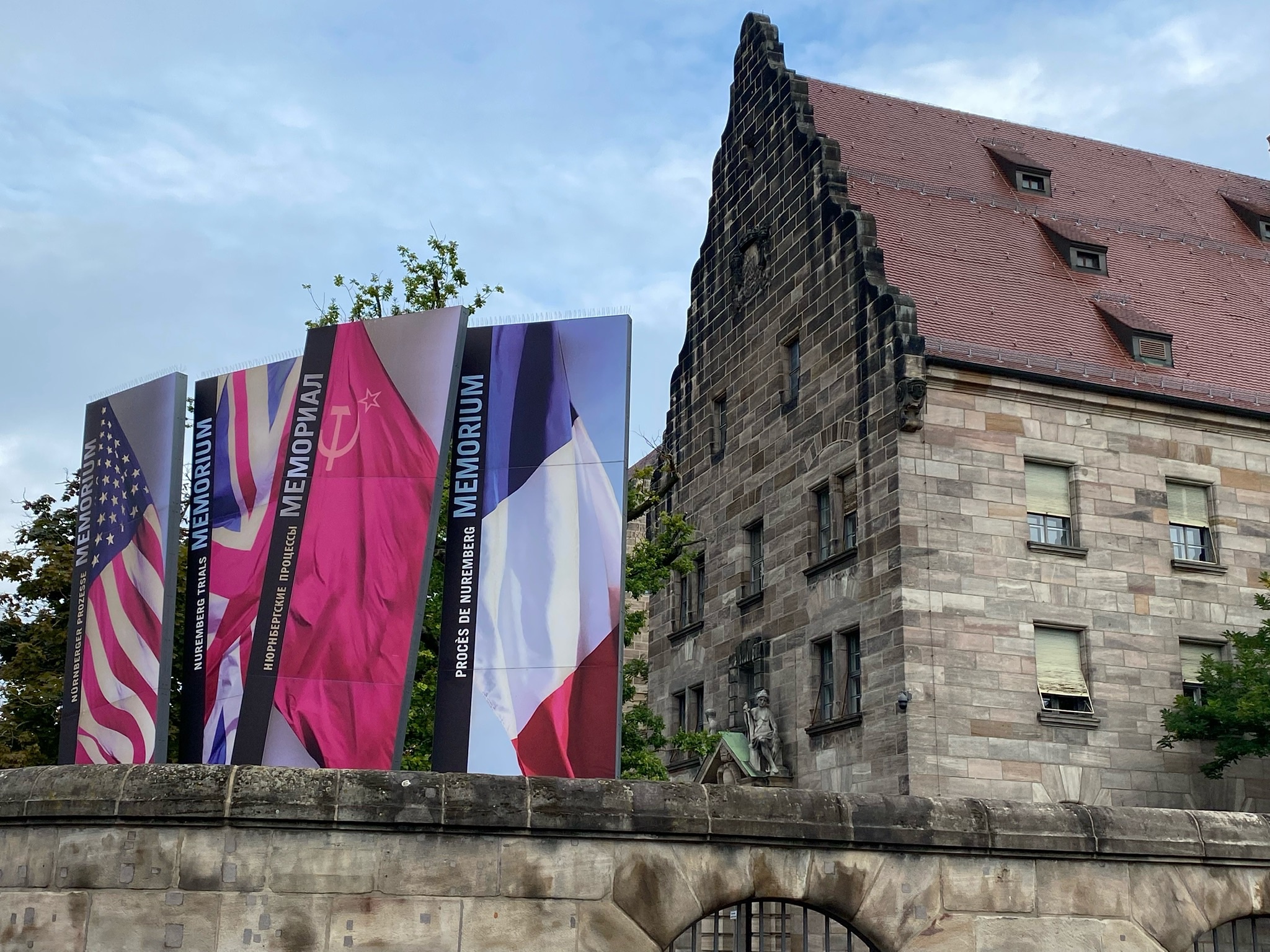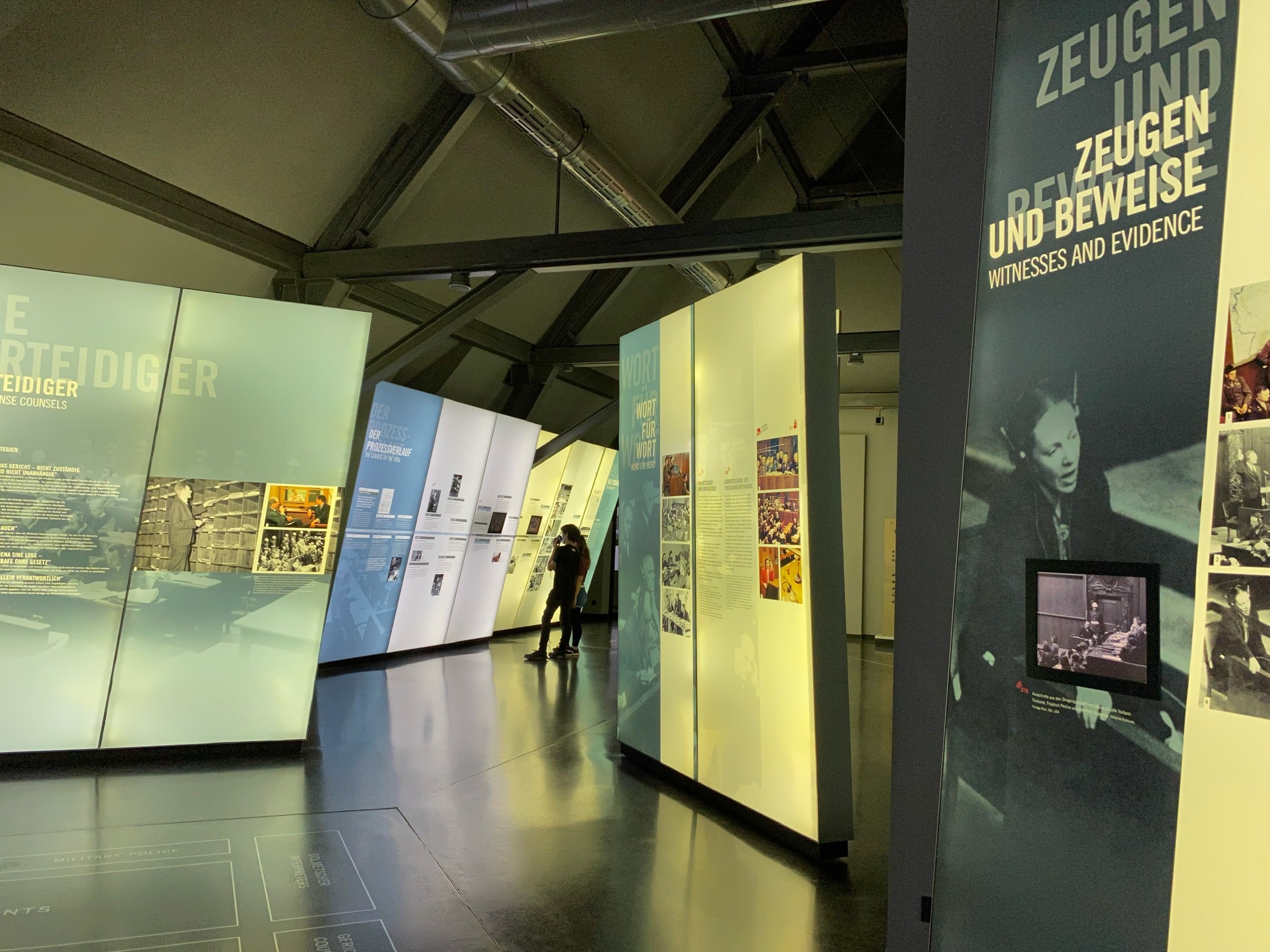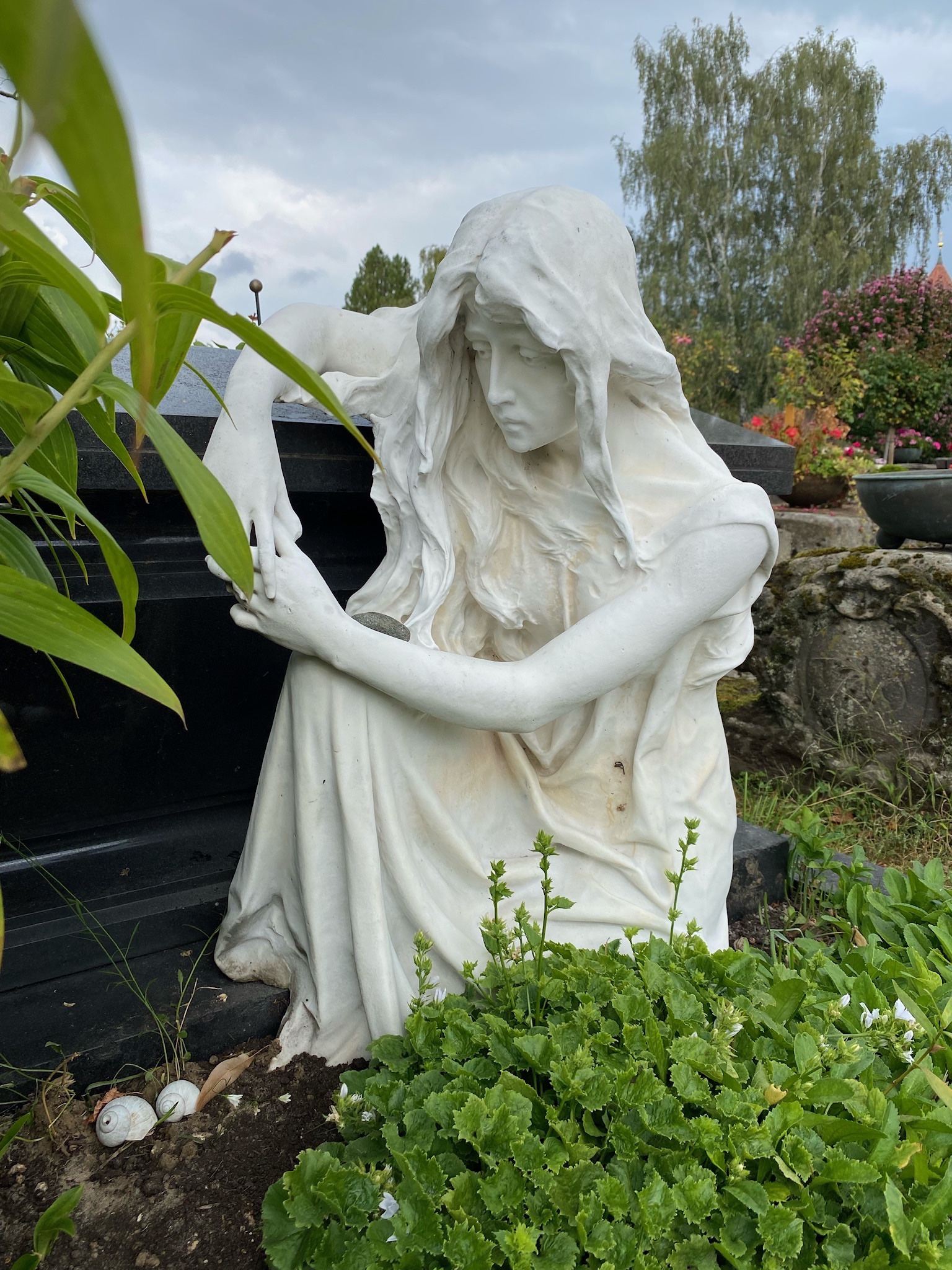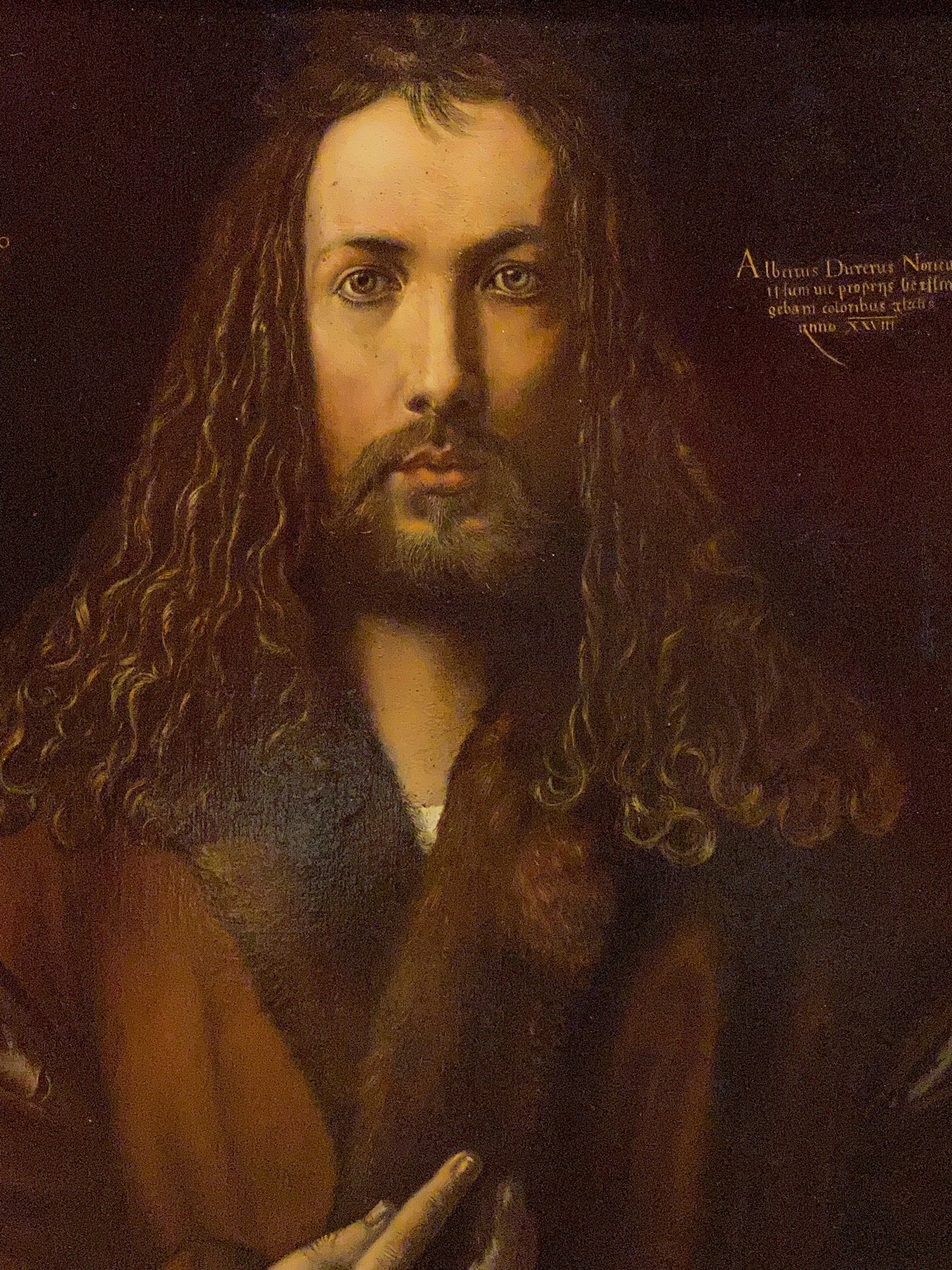11 September 2021
It’s an easy walk to U1, getting a ticket and then figuring direction of travel. About 10 minutes later I arrive at my destination: Memorium Nuremberg and Palace of Justice. It is a huge complex but the Palace is closed today, Saturday. My real purpose is to visit the site of the infamous Nuremberg Trials and the event that changed how the world faced international justice and dealing with crimes against humanity.

Court Room 600 where the trials occurred in 1946 has been redesigned but the audio presentation does a fine job of describing how it was for the trials. It is a relatively unimpressive venue for an event that mesmerized and shook the world to its core. Here sat the accused who purposely murdered millions of people who were felt to be inferior or threatening to their power and position. Here, thru film and news coverage, the world’s citizens saw and heard the horrors the accused willingly perpetuated. Here sat the Court who judged them fairly and sentenced them.
The third floor is a maze of placards and media which begins by setting the stage for Germany’s war. Displays meticulously walk through the history leading up to the necessity for the Nuremberg trials for war crimes and crimes against humanity by Hitler’s minions. One can hear the trial and witnesses in their own words, which is chilling.

Everything is written in German but the audio guide translates it all. It could take over three hours to listen to each stop so I was selective. The panels also include information on the trials emanating from Japanese war crime trials, and Germany’s struggles to prosecute, and accept, further trials for war crimes that followed the original Nuremberg trials. It has been a difficult journey but I am seeing and reading about their progress since the 1980s.
I see a similar era currently occurring in the USA. The struggle requires the recognition of continued systemic racism hidden in American society. Since Trump, racism is no longer hiding. Germans wanted to hide behind the claim that “Hitler bears sole responsibility.” This is no more valid than Trump bears sole responsibility for the crisis of democracy we face in America. This racism is in our history and buried in some people’s soul. To argue against the removal of a statue of “hero Robert E. Lee” is no less than trying to blame Hitler for what his followers believed and executed. As this important museum begins: WW2 began with a propaganda lie and progressed to unimaginable horror. We must learn from our past and become better.

For an emotional relief, I took a pleasant walk along the river path to the Johannisfriedhof Cemetery, Nuremberg’s old monumental resting place for Nuremberg’s elite. The cemetery is relatively small for its importance and has three small chapels. The flower covered graves, decorations and epitaphs are a pleasant diversion from the tourist flooding the old city.
Nearby is just one of the many gardens and green spaces found in the city. Hesperidengärten is a lovely rose garden – sparse on roses but quiet and pleasant for a rest. Autumn is coming and I see it in the changing colors of the ivy vines, the sprightly red squirrels working on their fall nut harvest, and falling leaves in the garden.
One last stop for the day is Albrecht Dürer’s House at the foot of the castle, tucked next to the old city walls. Albrecht Dürer (1471-1528) was Germany’s most respected painter, printmaker and writer of the German Renaissance. He was born in Nuremberg, studied in Italy where he counted Raphael and da Vinci as friends, and was early-on patronized by Emperor Maximilian I. His woodcuts and engravings were revolutionary while his alter pieces, portraits and self-portraits are recognized as masterpieces. Few of his original works remain in his home town.

Dürer wrote several successful treatise on the idea of beauty and how an artist can imagine and create beautiful images. He is one of the few artist of his era, or any era, who met wide success while still alive. His self-portrait, painted in 1500 when only 28, dates a few years earlier than the Mona Lisa and continues to fascinate art historians almost as much as Leonardo’s masterpiece.
Plus, Albrecht was a lot more attractive than Mona.
0 Comments